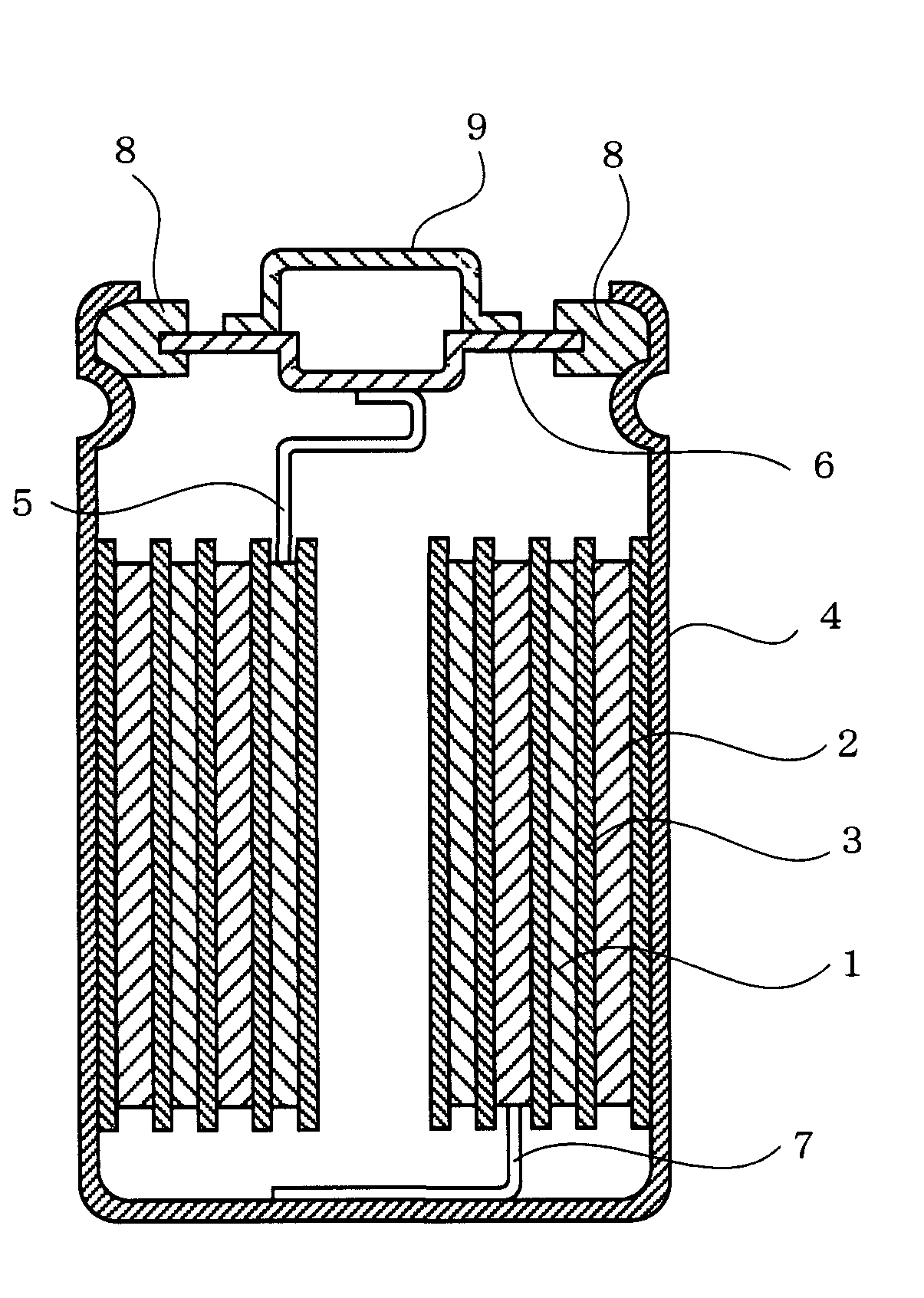Non-aqueous electrolyte for secondary battery and non-aqueous electrolyte secondary battery
a secondary battery and non-aqueous electrolyte technology, applied in the direction of primary cells, non-aqueous electrolyte cells, electrochemical generators, etc., can solve the problems of increased viscosity of non-aqueous electrolyte, rise of reactivity with a negative electrode, and suppresses the decomposition of chain fluorinated carboxylic acid ester, and suppresses the decomposition of excessively. , the effect o
- Summary
- Abstract
- Description
- Claims
- Application Information
AI Technical Summary
Benefits of technology
Problems solved by technology
Method used
Image
Examples
example 3
[0059]In Example 3, a mixed solvent as the non-aqueous solvent of the non-aqueous electrolyte was prepared as follows. The foregoing 4-fluoroethylene carbonate (4-FEC) used in Example 1 as film forming chemical compound was mixed with 2,2-difluoroethyl acetate (CH3COOCH2CHF2) used in Example 1 as chain fluorinated carboxylic acid ester at a volume ratio of 1:9. Except for the non-aqueous solvent, a non-aqueous electrolyte secondary battery of Example 3 was fabricated in the same manner as in Example 1.
example 4
[0060]In Example 4, a mixed solvent as the non-aqueous solvent of the non-aqueous electrolyte was prepared as follows. The foregoing 4-fluoroethylene carbonate (4-FEC) used in Example 1 as film forming chemical compound, 2,2-difluoroethyl acetate (CH3COOCH2CHF2) used in Example 1 as chain fluorinated carboxylic acid ester, and dimethyl carbonate (DMC) were mixed at a volume ratio of 2:4:4. Except for the non-aqueous solvent, a non-aqueous electrolyte secondary battery of Example 4 was fabricated in the same manner as in Example 1.
example 5
[0061]In Example 5, a mixed solvent as the non-aqueous solvent of the non-aqueous electrolyte was prepared as follows. The foregoing 4-fluoroethylene carbonate (4-FEC) used in Example 1 as film forming chemical compound, 2,2-difluoroethyl acetate (CH3COOCH2CHF2) used in Example 1 as chain fluorinated carboxylic acid ester, and dimethyl carbonate (DMC) were mixed at a volume ratio of 2:4:4. Then, lithium hexafluorophosphate LiPF6 was dissolved in a concentration of 1 mol / l to the mixed solvent, and 2 weight % of vinyl ethylene carbonate (VEC) as film forming chemical compound was further added thereto. Except for the non-aqueous solvent, a non-aqueous electrolyte secondary battery of Example 5 was fabricated in the same manner as in Example 1.
PUM
| Property | Measurement | Unit |
|---|---|---|
| charge cut-off voltage | aaaaa | aaaaa |
| volume ratio | aaaaa | aaaaa |
| temperature | aaaaa | aaaaa |
Abstract
Description
Claims
Application Information
 Login to View More
Login to View More - R&D
- Intellectual Property
- Life Sciences
- Materials
- Tech Scout
- Unparalleled Data Quality
- Higher Quality Content
- 60% Fewer Hallucinations
Browse by: Latest US Patents, China's latest patents, Technical Efficacy Thesaurus, Application Domain, Technology Topic, Popular Technical Reports.
© 2025 PatSnap. All rights reserved.Legal|Privacy policy|Modern Slavery Act Transparency Statement|Sitemap|About US| Contact US: help@patsnap.com



